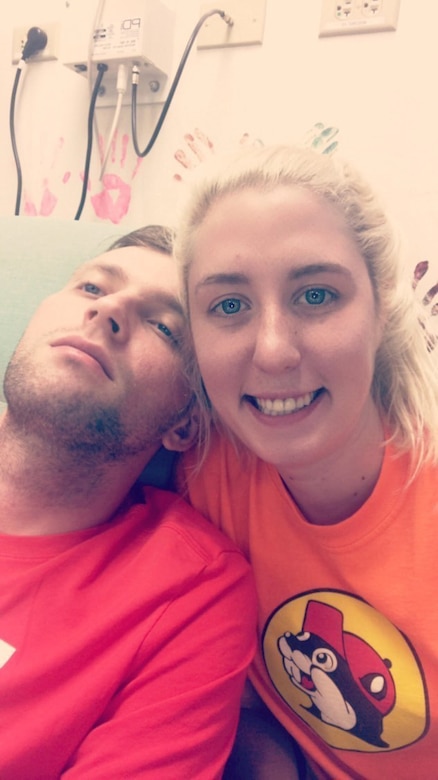By Army Capt. Eric Hudson, 3rd Brigade Combat Team, 25th
Infantry Division
SCHOFIELD BARRACKS, Hawaii -- When Army Sgt. Joseph Mickonis
called his fiancee early in 2016 to say doctors thought he might have cancer,
he couldn’t stop laughing.
“I’m trying to tell her she should come down to the
hospital, but I can’t stop laughing,” he said. “So, she doesn’t think I’m
serious. It was just one of the weirdest feelings, ever.”
Mickonis said he didn’t think it was a joke; laughing was
just his way of dealing with the news. After some tests, doctors confirmed it
was Hodgkin’s lymphoma, a type of cancer that spread in his neck.
‘What’s Next?’
“I didn’t break down in tears, I was like, ‘What’s next?’”
Mickonis said.
What was next was an estimated four months of chemotherapy,
which turned into nine months. He would leave his platoon in 2nd Battalion,
35th Infantry Regiment, 3rd Brigade Combat Team, 25th Infantry Division, where
he served as a mortarman and joined the Warrior Transition Battalion to focus
on his medical appointments at Tripler Army Medical Center at Fort Shafter.
Now, almost a year and a half later, Mickonis is cancer-free
and ready to return to his unit.
A close friend in his company, Army Spc. Jacob Lewis, was
with him through the entire process.
‘It Never Really Got Him Down’
“It never really got him down,” Lewis said. “He always just
did what he had to do and kept going.”
Still, Lewis could tell when Mickonis had just been through
a treatment.
“You could tell the day of and the day after,” Lewis said.
“He’d seem tired, but if there was something he wanted to do he’d go do it. He
never let it stop him.”
Mickonis said the treatment made the sun feel especially
harsh on his skin. He would often walk around completely covered in hoodies and
pants just to cover his skin. But when his fiancé, Jessica, came to visit him
in Hawaii from Texas, they decided to go to the beach.
“I thought, ‘I’ll suck it up and go,’” he said. “I ended up
getting blisters all over my shoulder and it hurt like hell.”
He said there were some days that were rough, “Especially
after they were like just two more treatments, then two more, then two more. By
the end I was just ready for it to be over.”
Resilience
But he thinks of himself as resilient. As a 7 year old,
Mickonis said his parents were involved in a car accident that fatally injured
his father and left his mother almost a quadriplegic.
“Once you’ve been through something like that, I thought
having a little cancer wasn’t that bad. I didn’t look at it as a death
sentence,” he said. “It was OK you’ve got cancer; let’s deal with it and move
on to the next thing.”
Mickonis said he kept trusting his doctors and eventually he
was cancer-free.
“You get to ring a little bell,” he said of getting the
news. “I was happy, but I was just ready to move on.”
Lewis said Mickonis never showed a lot of emotion and he
tended to be pretty stoic in nature. But Mickonis did want to reenlist in the
Army and was concerned the cancer might prevent that.
Now that Mickonis has beaten cancer, he is just waiting on
some administrative work until he can return to his unit and eventually
reenlist. And the fiancee that thought he was joking about having cancer is now
his wife and the two are expecting their first child by the end of the year.








